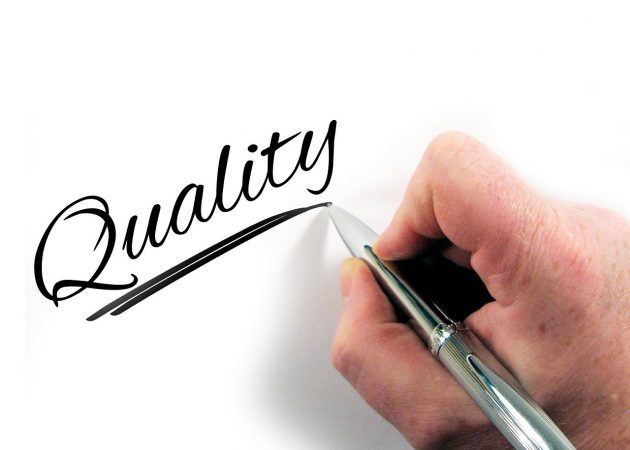Total Quality Management is an extended and structured organizational management approach. It focuses on continuous improvement of the products and services quality using continuous feedback.
The exact origin of the term Total Quality Management is not certain. What is certain is that it was certainly inspired by the works of Armand V. Feigenbaum and Kaoru Ishikawa.
From its origins the concept has been developed and can be used for almost all types of organizations, not just traditional companies but also schools, hotels, communities, etc.
Nowadays, Total Quality Management is also used in the e-business sector and perceives quality management entirely from the customer’s point of view.
CONTENT INDEX
Total Quality Management’s objective is to do things well and satisfactorily for the customer and to repeat this positive experience.
This allows the organization to save the time it takes to correct poor work and failed implementations of products and services, such as warranty repairs.
Total Quality Management can be set differently depending on the type of organization or for a series of standards to be followed, such as in the case of the ISO 9000.
In this type of approach, the strategy, data and communication channels are used to integrate the quality principles required in the organization’s activities and culture.
The principles of Total Quality Management
Total Quality Management has a series of basic principles that can be summarized in the following points:
- Focus on customers
- Employee involvement
- Process centralization
- Integrated system
- Strategic and systematic approach
- Decision-making process based on facts
- Communication
- Continuous improvement
Focus on customers
When following the principles of this approach it’s essential to remember that only customers determine the level of quality.
Regardless of the efforts made in the training of employees or the improvement of processes, only customers determine, through questionnaires, for example, whether the efforts have contributed to the continuous improvement of the quality of services and products.
Employee involvement
Employees are internal customers of an organization.
Employee involvement in the development of an organization’s products or services largely determines the quality of these products or services.
All employees within a company must understand that they have an important role to play in ensuring high levels of quality in the products and services that the organization produces.
Hence, it’s good to create a corporate culture in which employees feel involved in the organization.

Process centralization
The thinking process and managing processes are a fundamental part of Total Quality Management.
Processes are the guiding principle and people support them based on goals that are related to mission, vision and strategy in general.
Integrated system
It’s important to have an integrated organizational system that can be modeled, for example according to ISO 9000 standards, or a company quality system for understanding and managing the quality of an organization’s products or services.
Strategic and systematic approach
A strategic plan must embrace the integration and development of the quality of an organization’s products and services.
Decision-making process based on facts
The decision-making process within the organization must be based only on concrete facts and not on opinions, emotions and personal interests. Data should support decision making.
A quality management system is only effective when it is possible to quantify the results; in fact, it is necessary to see how and if the implemented process is having the desired effect.
This will help set goals for the future and make sure each department is working for the same result.
Communication
A communication strategy must be formulated in such a way that it is in line with the mission, vision and business objectives.
This strategy includes all stakeholders, evaluates communication channels, measurability of effectiveness, timeliness, etc.
Continuous improvement
By using the right measurement tools and innovative and creative thinking, continuous improvement proposals will be launched and implemented so that the organization can develop into a higher level of quality.
Total Quality Management is not something that is done once and then forgotten. It’s not a management phase that will end after a problem has been corrected.
Real improvements must occur frequently and continuously in order to increase customer satisfaction and loyalty.
Practical approach to Total Quality Management
When implementing Total Quality Management, a concept is implemented.

In fact, it is not a predefined system to “mount”, but it is a line of reasoning that must be incorporated into the organization and its culture.
The practice has shown that there are a number of basic assumptions that contribute to the success of Total Quality Management within an organization.
These basic assumptions are:
- Form the top management on the principles of Total Quality Management and ask for their commitment in this regard;
- Evaluate the current company culture, customer satisfaction and the quality system;
- Senior management determines the desired core values and principles and communicates them within the organization;
- Develop a total quality management plan using the basic principles mentioned above;
- Identify and prioritize customer and market needs and determine the products and services of the organization that can meet these needs;
- Determine critical processes that can make a substantial contribution to products and services;
- Create teams capable of working on process improvement;
- Managers must support teams through planning, resources and training;
- Management integrates the desired changes for the improvement of daily processes. After the implementation of improved processes, standardization comes in play;
- Evaluate progress continuously and adjust planning or other critical issues if necessary;
- Stimulate employee involvement. Awareness and feedback lead to a general improvement of the whole process.
In summary, Total Quality Management is not a quick solution and one must understand that real results may not occur immediately.
It is not a short-term investment but is designed to help an organization find long-term success.
What is your experience with Total Quality Management?
Is its principles applied within the organization you work with?
Are there any other basic assumptions that you think are important? Leave us your feedback below.




